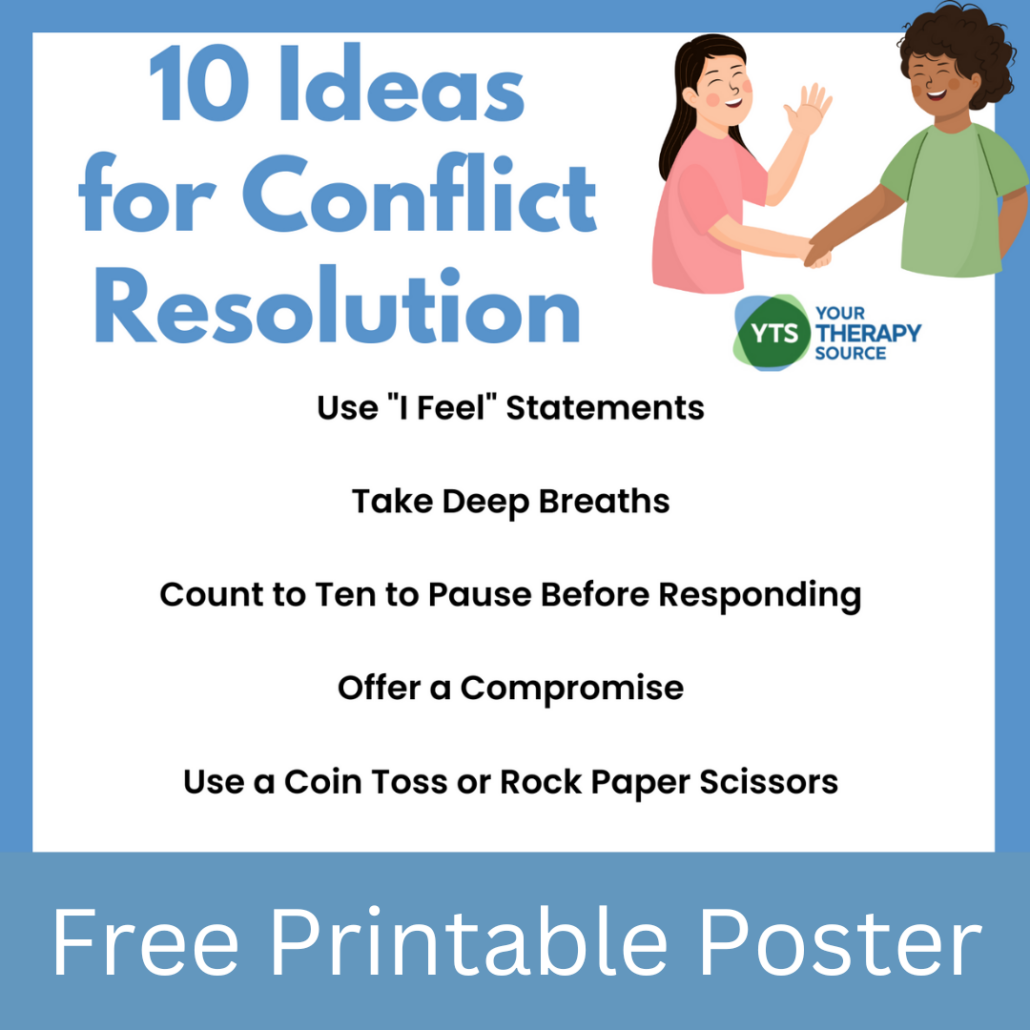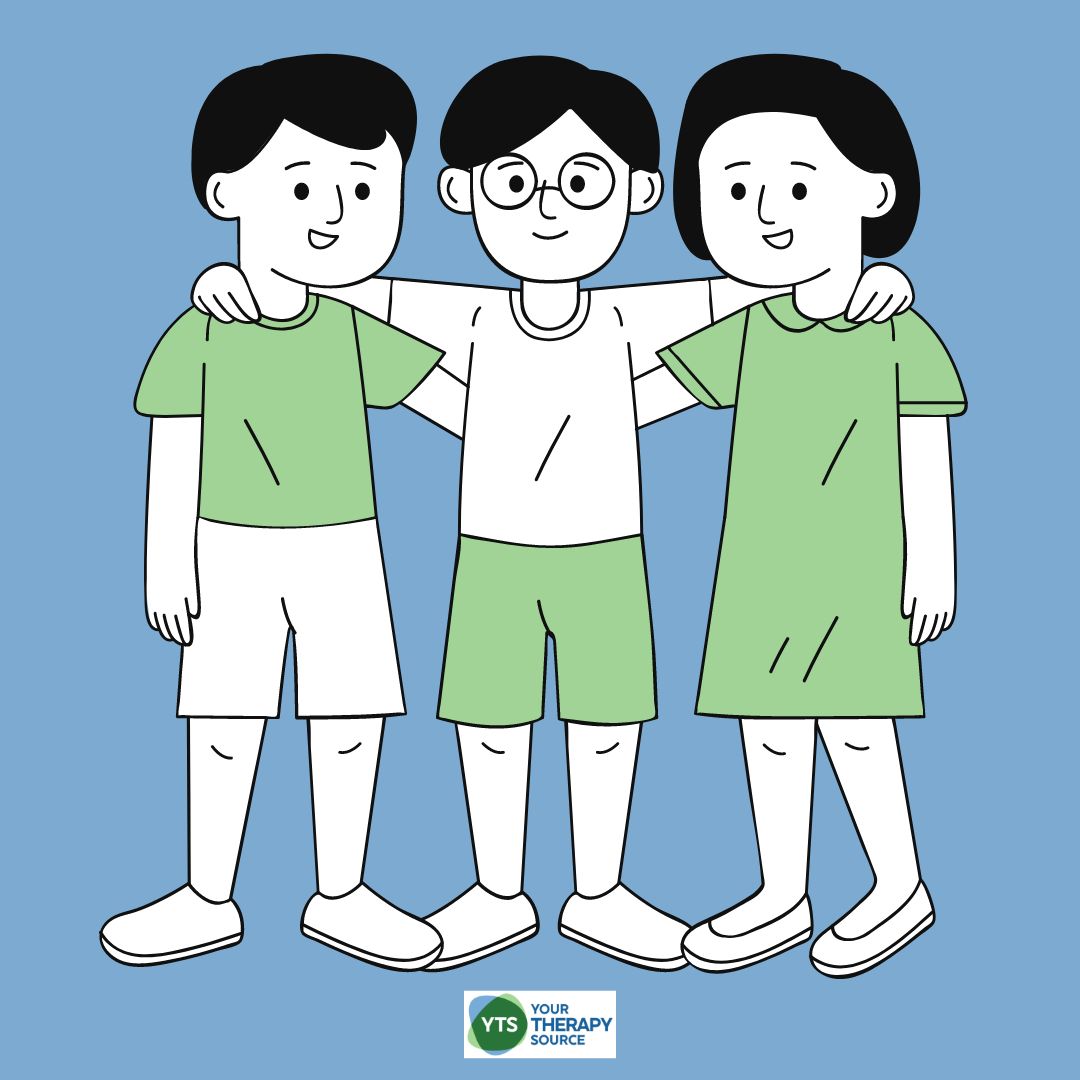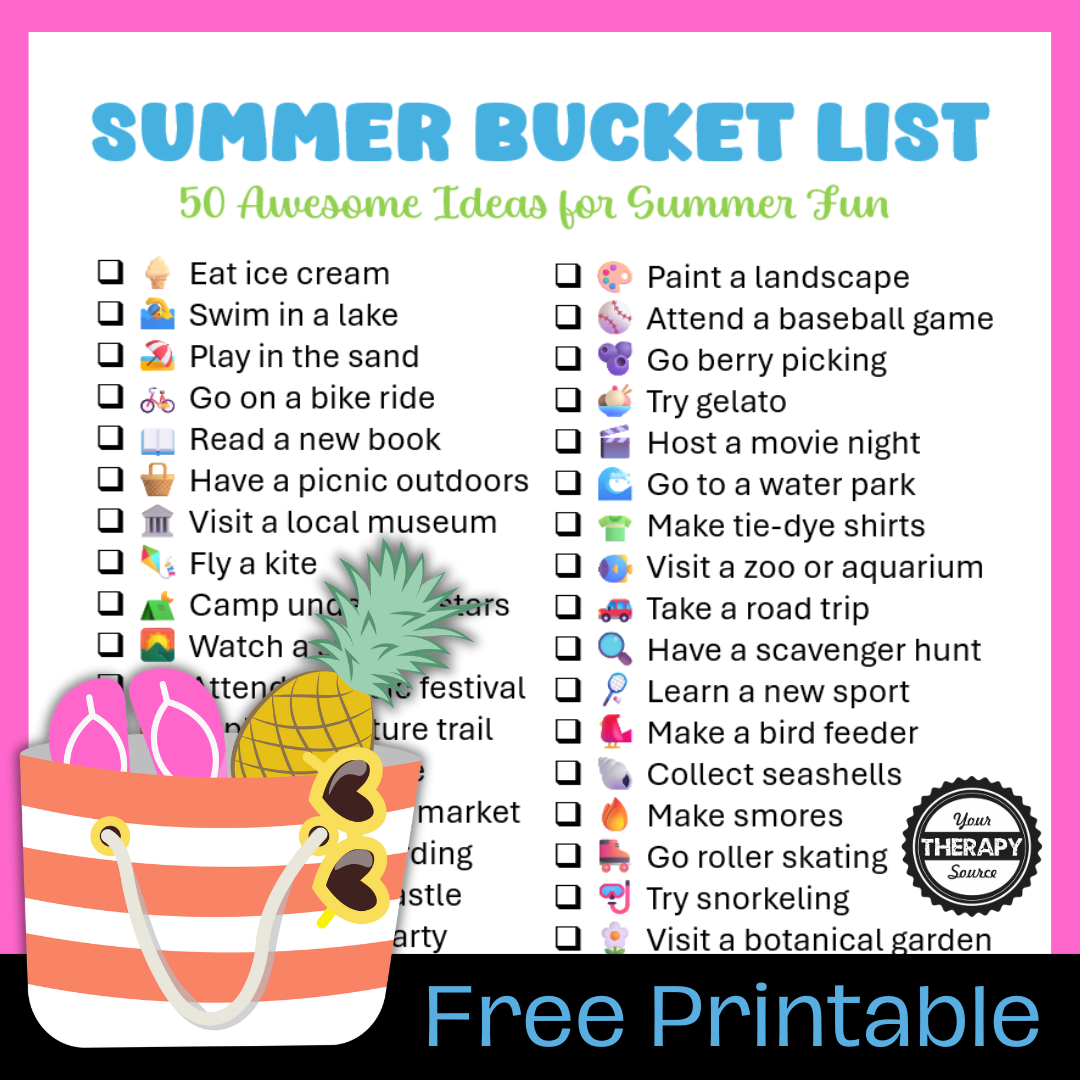Conflict Resolution Strategies for Kids
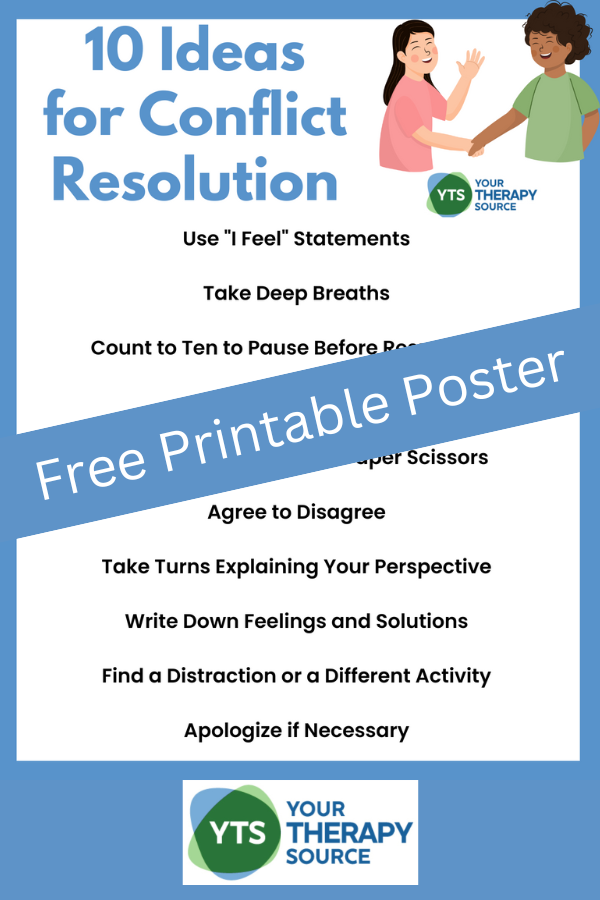
Teaching kids how to resolve conflicts effectively is an important aspect to their social and emotional development. Conflict Resolution Strategies for Kids equip children with the necessary skills to handle disagreements but also promote healthy relationships and emotional intelligence. Learn more about the practical strategies for both young children and teens, ensuring that they learn to manage conflicts in a healthy and constructive manner.
At the bottom of the post, you can download a free printable list of 10 strategies for resolving conflicts.
Understanding Conflict Resolution for Young Children
Conflict resolution is an important skill that should be nurtured from an early age. Here are ten strategies that children can use independently to resolve conflicts:
- Use “I” Statements: Teach children to express their feelings without blaming others by starting sentences with “I feel…” See below for a list of 50 different ideas to practice this essential skill.
- Take Deep Breaths: Encourage taking deep breaths to calm down and think more clearly before responding.
- Count to Ten: Delaying reaction to give themselves time to cool off and consider their words carefully. Try this printable.
- Offer a Compromise: Finding a middle ground where both parties can agree, demonstrating the vital role of negotiation.
- Use a Coin Toss or Rock Paper Scissors: For decisions that don’t have a clear emotional stake, using different games like Rock Paper Scissors to decide can keep things fair.
- Agree to Disagree: Understanding that it’s okay not to come to an agreement on every issue and still remain friends.
- Take Turns Explaining: Practicing active listening and giving everyone a chance to voice their perspective without interruption.
- Write Down Feelings and Solutions: This helps clarify their thoughts and communicate their feelings more effectively.
- Find a Distraction: Briefly engage in a different activity to reset emotions.
- Apologize if Necessary: Recognizing their own mistakes and expressing regret sincerely to mend relationships.
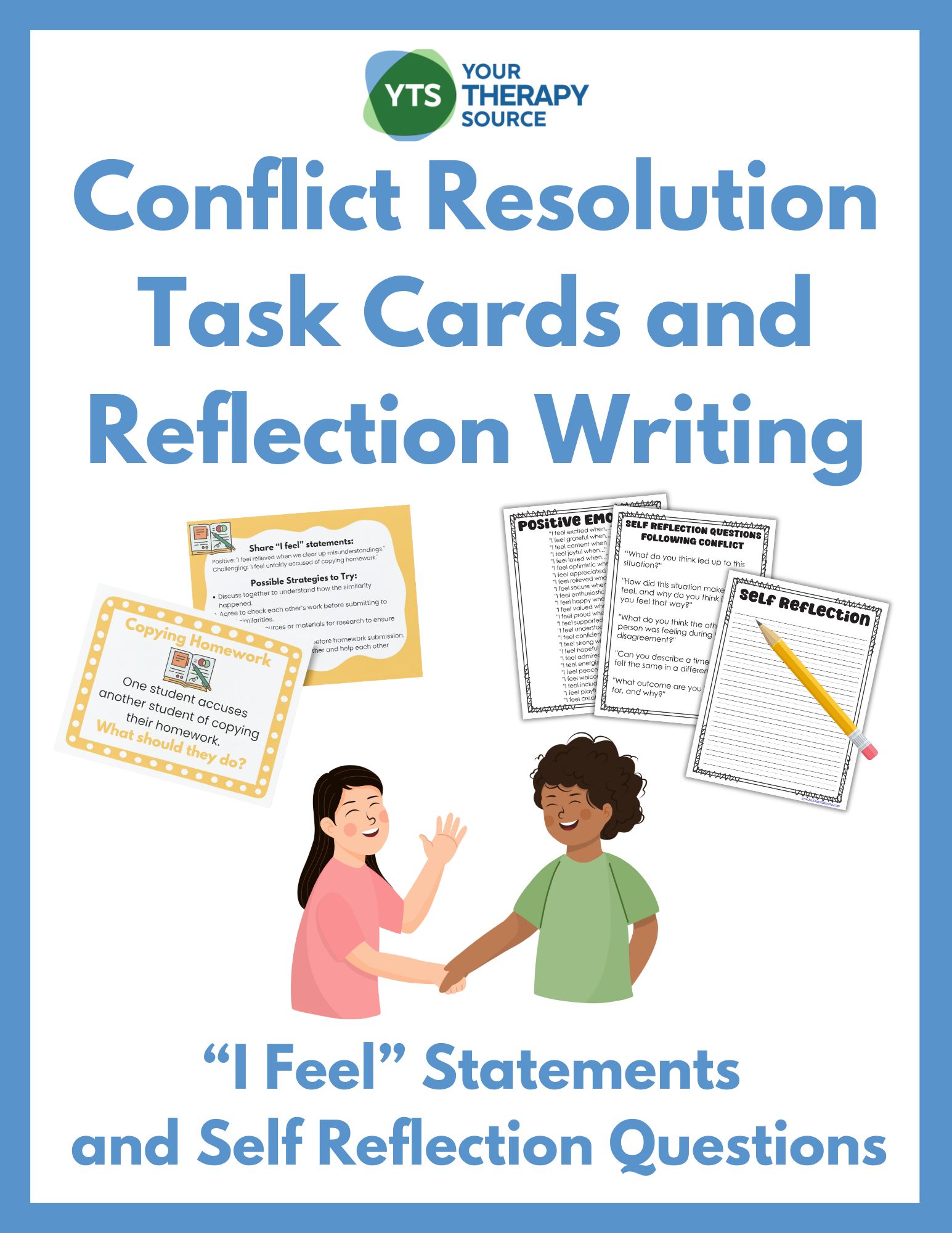
Conflict Resolution Task Cards and Self Reflection Questions
Conflict Resolution Techniques in Elementary Schools
Elementary schools play a crucial role in teaching conflict resolution skills. Role-playing exercises and cooperative games are effective methods that help children practice these skills in fun and engaging ways. Teachers and school counselors can facilitate scenarios that allow children to experience hypothetical conflict scenarios and brainstorm solutions, providing a safe environment for learning and growth.
Conflict Resolution Strategies for Teens
As children grow into teenagers, their conflicts can become more complex, reflecting the challenges of their social interactions and emotional maturity. Here are some strategies tailored specifically for teens:
- Advanced Communication Skills: Encouraging the use of open-ended questions to explore different perspectives and build understanding. Here is a list of 10 open-ended questions designed to encourage deeper understanding and exploration of different perspectives:
- “What do you think led up to this situation?”
- This question encourages teens to reflect on the sequence of events and the context surrounding the conflict.
- “How did this situation make you feel, and why do you think it made you feel that way?”
- This helps teens connect their feelings to specific actions or words, promoting emotional intelligence.
- “What do you think the other person was feeling during this disagreement?”
- Encourages empathy by prompting teens to consider the emotions of others involved in the conflict.
- “Can you describe a time when you felt similarly in a different situation?”
- This question helps teens draw parallels between past experiences and the current conflict, fostering self-awareness and understanding.
- “What outcome are you hoping for, and why?”
- Focuses on identifying each party’s desired resolution and the reasons behind these expectations.
- “What are some ways we could resolve this issue together?”
- Promotes collaborative problem-solving and encourages teens to think creatively about possible solutions.
- “How do you think we can prevent similar situations in the future?”
- Looks forward to proactive strategies that can be implemented to avoid repeating the same conflicts.
- “What can we learn from this situation?”
- Shifts the focus from blame to learning, emphasizing the conflict as a growth opportunity.
- “How would you like to be treated in this situation if our roles were reversed?”
- Encourages teens to consider fairness and the golden rule of treating others as they would like to be treated.
- “What do you need from this conversation to feel resolved and respected?”
- Directly addresses the needs of the teen, ensuring that the resolution encompasses respect and closure for all parties.
- “What do you think led up to this situation?”
- Critical Thinking: Teaching teens to assess the source of the conflict and think through potential solutions logically.
- Emotional Regulation: Highlighting the importance of managing intense emotions through techniques such as mindfulness and reflective journaling.
- Peer Mediation Programs: Involving trained peers in the conflict resolution process can be a valuable tool, promoting independence and reinforcing social-emotional skills.
- Digital Etiquette: With online school and social media, teaching digital etiquette and how to resolve conflicts online is increasingly important.
When to Seek Help
It’s essential that both children and teens know when a conflict is beyond their ability to resolve independently. Here are signs that they should seek help from an adult:
- The Conflict Escalates: If the disagreement intensifies or becomes physical, it’s time to involve an adult.
- Emotions Overwhelm: When emotions become too intense to manage or communicate effectively.
- Safety is a Concern: Anytime they feel unsafe or threatened, reaching out to an adult is a must.
This is an important first step in learning to manage their own conflicts responsibly and recognizing when situations require adult intervention.
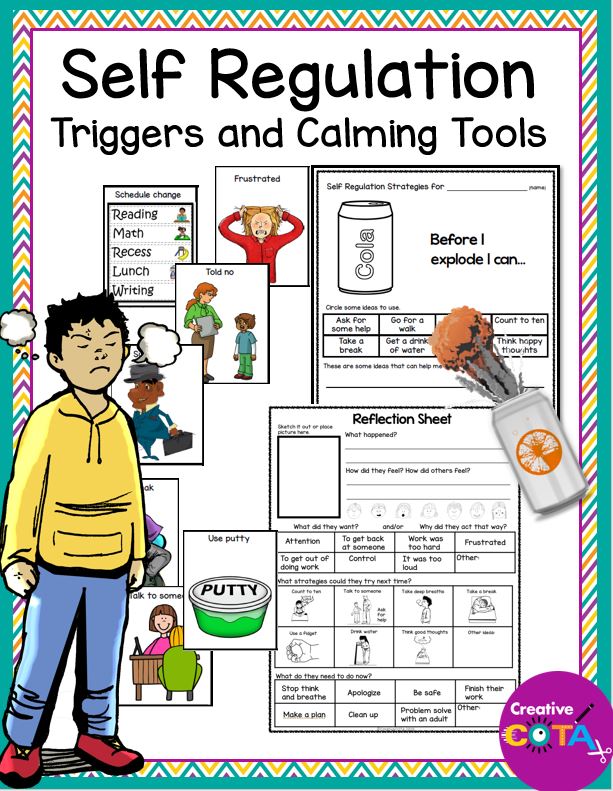
Self Regulation Triggers and Calming Tools
Fostering Independence and Healthy Relationships
By mastering Conflict Resolution Strategies for Kids and teens, young people gain critical life skills that will serve them in everyday life and in building and maintaining healthy friendships. These strategies teach valuable lessons in communication, understanding, and mutual respect, which are foundational for successful social interactions and the development of strong emotional intelligence.
For more insights and resources, check out Conflict Resolution Skills for Kids. Remember, conflict resolution is not just about finding immediate solutions. It’s also a learning opportunity that helps children and teens grow into compassionate, understanding adults capable of handling whatever comes their way.
”I” Feel Statements to Get Kids Started
list to include 50 unique “I feel” statements that kids can use to express a wide range of emotions during conflict resolution. “I” statements are a great way for kids to express their feelings without blaming others, which can help diffuse conflicts. There are 25 positive options and 25 different emotions that are more challenging.
Positive Emotions I Feel Statements
- “I feel excited when…”
- “I feel grateful when…”
- “I feel content when…”
- “I feel joyful when…”
- “I feel loved when…”
- “I feel optimistic when…”
- “I feel appreciated when…”
- “I feel relieved when…”
- “I feel secure when…”
- “I feel enthusiastic when…”
- “I feel happy when…”
- “I feel valued when…”
- “I feel proud when…”
- “I feel supported when…”
- “I feel understood when…”
- “I feel confident when…”
- “I feel strong when…”
- “I feel hopeful when…”
- “I feel admired when…”
- “I feel energized when…”
- “I feel peaceful when…”
- “I feel welcome when…”
- “I feel included when…”
- “I feel playful when…”
- “I feel creative when…”
Challenging Emotions
- “I feel hurt when…”
- “I get frustrated when…”
- “I feel sad when…”
- “I feel angry when…”
- “I feel ignored when…”
- “I feel upset when…”
- “I get worried when…”
- “I feel disappointed when…”
- “I feel annoyed when…”
- “I feel confused when…”
- “I feel left out when…”
- “I feel overwhelmed when…”
- “I feel scared when…”
- “I feel embarrassed when…”
- “I feel neglected when…”
- “I feel pressured when…”
- “I feel unimportant when…”
- “I feel bored when…”
- “I feel misunderstood when…”
- “I feel criticized when…”
- “I feel jealous when…”
- “I feel ashamed when…”
- “I feel helpless when…”
- “I feel guilty when…”
- “I feel isolated when…”
This comprehensive list helps kids articulate a broad spectrum of emotions, equipping them with the vocabulary to communicate effectively during conflicts and better manage their relationships.
Examples of I Feel Statements for Conflict Resolution
Here are ten examples of “I” statements that can be used in various conflict resolution scenarios:
- “I feel hurt when you laugh at me because it makes me feel embarrassed.”
- “I get frustrated when we don’t take turns because I feel left out.”
- “I feel sad when you don’t listen to my ideas in our games.”
- “I feel angry when you use my things without asking first.”
- “I feel ignored when you talk over me, and I would like to finish what I was saying.”
- “I feel upset when you call me names because it hurts my feelings.”
- “I get worried when we argue about this because I don’t want to lose our friendship.”
- “I feel disappointed when you don’t show up on time because I was looking forward to playing together.”
- “I feel annoyed when you interrupt me because it seems like you’re not interested in what I have to say.”
- “I feel happy when we share because it makes playing together more fun.”
Five Key Points Regarding Conflict Resolution Strategies for Kids
Here are five key points to foster independence in kids and teens when it comes to conflict resolution:
- Encourage Self-Reflection: Teach kids and teens to take a moment to reflect on their own emotions and the situation before reacting. This helps them understand their feelings, identify the source of the conflict, and approach the resolution process more thoughtfully.
- Promote Problem-Solving Skills: Equip children with the tools to brainstorm solutions independently. Encourage them to think of different ways to solve a problem and evaluate the possible outcomes. This not only helps in finding a solution that works for all parties involved but also enhances their critical thinking and decision-making skills.
- Teach Effective Communication Techniques: Effective communication is key to resolving conflicts. Encourage the use of “I” statements, active listening, and open-ended questions. These tools help children express their thoughts and feelings clearly and listen to others without judgment, fostering mutual understanding and respect.
- Support Emotional Regulation: Help children learn to manage their emotions during conflicts. Techniques like taking deep breaths, counting to ten, or stepping away for a moment can be very effective. This enables them to maintain control over their reactions and engage in more constructive discussions.
- Create Opportunities for Independent Conflict Resolution: Allow children and teens to handle conflicts on their own whenever it’s safe and appropriate to do so. Supervise and guide them when needed, but give them the space to apply the conflict resolution skills they’ve learned. This builds confidence and reinforces their ability to manage disputes independently.
By focusing on these key areas, children and teens can develop the independence they need to handle conflicts effectively on their own, laying the foundation for strong interpersonal skills and lasting, healthy relationships.

